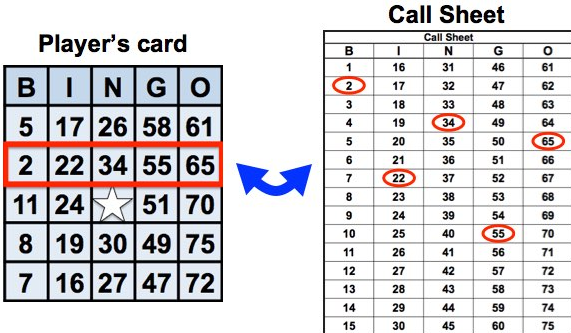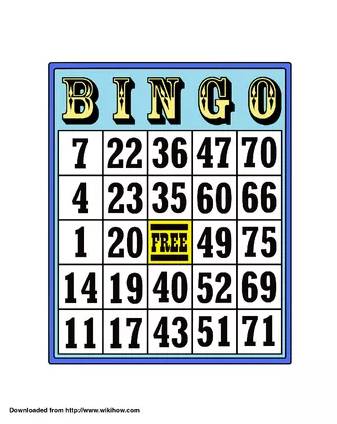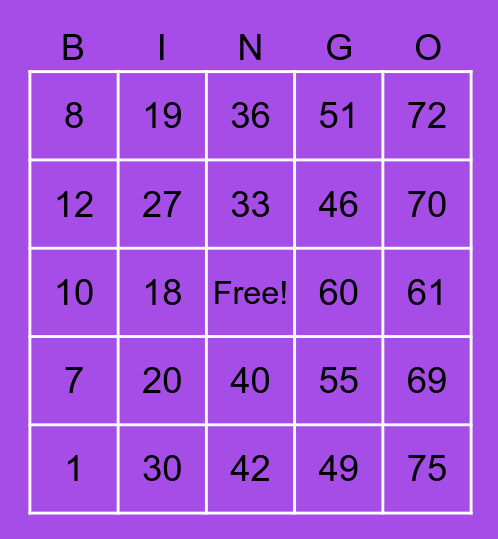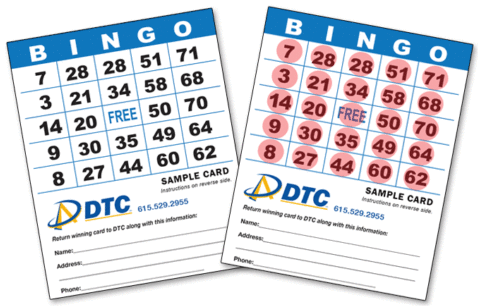In bingo, winning numbers are randomly drawn, with no specific numbers guaranteeing a win.
Understanding Bingo Numbers
Bingo, a popular game of chance, relies heavily on the numbers drawn. These numbers, determined by the variant of bingo you’re playing, hold the key to winning. To truly understand the essence of the game, let’s dive deeper into the realm of bingo numbers.
Range of Numbers in Different Bingo Variants
Bingo variants across the globe come with their own set of rules and number ranges. Here’s a breakdown:
- 75-Ball Bingo: Predominantly played in North America, this version uses numbers ranging from 1 to 75. Each player’s card has a 5×5 grid with the center cell usually marked as a free space.
- 90-Ball Bingo: This variant is popular in the UK and some parts of Europe. Numbers go from 1 to 90, and the bingo card consists of a 3×9 grid.
- 80-Ball Bingo: A less common type, mostly found online, features numbers between 1 and 80. The card layout is typically a 4×4 grid.
- 30-Ball Bingo: Also known as ‘Speed Bingo’, this game uses numbers from 1 to 30, making it a quicker alternative. The bingo card for this is a 3×3 grid.

Frequency and Randomness
Understanding the randomness of bingo numbers is crucial to grasping the game’s fairness. In essence, every number has an equal chance of being drawn.
- Bingo Machines: Traditional bingo halls use mechanical machines with balls, ensuring each number gets an equal opportunity to be picked.
- Electronic Number Generation: Online platforms use random number generators (RNGs). These RNGs are algorithms designed to produce sequences of numbers that lack any patterns, essentially mimicking randomness. To know more about RNGs, you can refer to this Wikipedia link.
- Frequency Myths: Some players believe that certain numbers are “luckier” than others. However, statistically speaking, over a long period, each number should appear approximately the same number of times.
Remember, bingo, at its core, is a game of chance. So, while strategies can be applied, the essence of the game remains in the unpredictable nature of the numbers drawn.
Understanding Bingo Numbers
Bingo, a popular game of chance, relies heavily on the numbers drawn. These numbers, determined by the variant of bingo you’re playing, hold the key to winning. To truly understand the essence of the game, let’s dive deeper into the realm of bingo numbers.
Range of Numbers in Different Bingo Variants
Bingo variants across the globe come with their own set of rules and number ranges. Here’s a breakdown:
- 75-Ball Bingo: Predominantly played in North America, this version uses numbers ranging from 1 to 75. Each player’s card has a 5×5 grid with the center cell usually marked as a free space.
- 90-Ball Bingo: This variant is popular in the UK and some parts of Europe. Numbers go from 1 to 90, and the bingo card consists of a 3×9 grid.
- 80-Ball Bingo: A less common type, mostly found online, features numbers between 1 and 80. The card layout is typically a 4×4 grid.
- 30-Ball Bingo: Also known as ‘Speed Bingo’, this game uses numbers from 1 to 30, making it a quicker alternative. The bingo card for this is a 3×3 grid.

Frequency and Randomness
Understanding the randomness of bingo numbers is crucial to grasping the game’s fairness. In essence, every number has an equal chance of being drawn.
- Bingo Machines: Traditional bingo halls use mechanical machines with balls, ensuring each number gets an equal opportunity to be picked.
- Electronic Number Generation: Online platforms use random number generators (RNGs). These RNGs are algorithms designed to produce sequences of numbers that lack any patterns, essentially mimicking randomness. To know more about RNGs, you can refer to this Wikipedia link.
- Frequency Myths: Some players believe that certain numbers are “luckier” than others. However, statistically speaking, over a long period, each number should appear approximately the same number of times.
Remember, bingo, at its core, is a game of chance. So, while strategies can be applied, the essence of the game remains in the unpredictable nature of the numbers drawn.
Odds and Probabilities
Delving into the realm of bingo, one can’t help but consider the odds and probabilities associated with the game. While bingo fundamentally remains a game of chance, understanding its odds can give players a better perspective on their winning potential. Let’s explore the intricate dance of numbers in bingo.
Factors that Influence Winning Chances
Several factors can tilt the odds slightly in any bingo game:
- Number of Players: The more players in a game, the lower each individual’s chance of winning becomes. If you’re playing against fewer opponents, your chances increase.
- Number of Cards: If a player holds more cards, their odds of having the winning pattern naturally increase. However, managing multiple cards can be challenging.
- Pattern Complexity: Some patterns are easier to achieve than others. For instance, Four Corners requires fewer numbers compared to a Full House or Blackout.
- Game Variants: Different bingo variants have their own set of numbers. The odds change based on whether you’re playing 30-ball, 75-ball, 80-ball, or 90-ball bingo.

Common Misconceptions about Winning Numbers
Over the years, various myths and misconceptions have surrounded the game of bingo. Some of the most prevalent ones include:
- Due Numbers: Some players believe that if a number hasn’t been called for a while, it’s “due” to come up soon. In reality, every number has an equal chance of being drawn in every game.
- Lucky Numbers: While many players have their favorite or “lucky” numbers, there’s no statistical evidence to suggest that certain numbers win more often than others.
- Unlucky Seats: Superstitious players sometimes avoid specific seats, thinking they bring bad luck. Where you sit has no influence on the game’s outcome.
- Quick Wins: Just because someone won quickly in a previous game doesn’t mean they have higher chances in the next. Each game resets the odds and probabilities.
In essence, bingo remains a game where luck reigns supreme. While strategies and understanding can provide an edge, the core of bingo lies in its unpredictable and exciting nature.
Odds and Probabilities
Delving into the realm of bingo, one can’t help but consider the odds and probabilities associated with the game. While bingo fundamentally remains a game of chance, understanding its odds can give players a better perspective on their winning potential. Let’s explore the intricate dance of numbers in bingo.
Factors that Influence Winning Chances
Several factors can tilt the odds slightly in any bingo game:
- Number of Players: The more players in a game, the lower each individual’s chance of winning becomes. If you’re playing against fewer opponents, your chances increase.
- Number of Cards: If a player holds more cards, their odds of having the winning pattern naturally increase. However, managing multiple cards can be challenging.
- Pattern Complexity: Some patterns are easier to achieve than others. For instance, Four Corners requires fewer numbers compared to a Full House or Blackout.
- Game Variants: Different bingo variants have their own set of numbers. The odds change based on whether you’re playing 30-ball, 75-ball, 80-ball, or 90-ball bingo.
Common Misconceptions about Winning Numbers
Over the years, various myths and misconceptions have surrounded the game of bingo. Some of the most prevalent ones include:
- Due Numbers: Some players believe that if a number hasn’t been called for a while, it’s “due” to come up soon. In reality, every number has an equal chance of being drawn in every game.
- Lucky Numbers: While many players have their favorite or “lucky” numbers, there’s no statistical evidence to suggest that certain numbers win more often than others.
- Unlucky Seats: Superstitious players sometimes avoid specific seats, thinking they bring bad luck. Where you sit has no influence on the game’s outcome.
- Quick Wins: Just because someone won quickly in a previous game doesn’t mean they have higher chances in the next. Each game resets the odds and probabilities.
In essence, bingo remains a game where luck reigns supreme. While strategies and understanding can provide an edge, the core of bingo lies in its unpredictable and exciting nature.
Odds and Probabilities
Delving into the realm of bingo, one can’t help but consider the odds and probabilities associated with the game. While bingo fundamentally remains a game of chance, understanding its odds can give players a better perspective on their winning potential. Let’s explore the intricate dance of numbers in bingo.
Factors that Influence Winning Chances
Several factors can tilt the odds slightly in any bingo game:
- Number of Players: The more players in a game, the lower each individual’s chance of winning becomes. If you’re playing against fewer opponents, your chances increase.
- Number of Cards: If a player holds more cards, their odds of having the winning pattern naturally increase. However, managing multiple cards can be challenging.
- Pattern Complexity: Some patterns are easier to achieve than others. For instance, Four Corners requires fewer numbers compared to a Full House or Blackout.
- Game Variants: Different bingo variants have their own set of numbers. The odds change based on whether you’re playing 30-ball, 75-ball, 80-ball, or 90-ball bingo.

Common Misconceptions about Winning Numbers
Over the years, various myths and misconceptions have surrounded the game of bingo. Some of the most prevalent ones include:
- Due Numbers: Some players believe that if a number hasn’t been called for a while, it’s “due” to come up soon. In reality, every number has an equal chance of being drawn in every game.
- Lucky Numbers: While many players have their favorite or “lucky” numbers, there’s no statistical evidence to suggest that certain numbers win more often than others.
- Unlucky Seats: Superstitious players sometimes avoid specific seats, thinking they bring bad luck. Where you sit has no influence on the game’s outcome.
- Quick Wins: Just because someone won quickly in a previous game doesn’t mean they have higher chances in the next. Each game resets the odds and probabilities.
In essence, bingo remains a game where luck reigns supreme. While strategies and understanding can provide an edge, the core of bingo lies in its unpredictable and exciting nature.